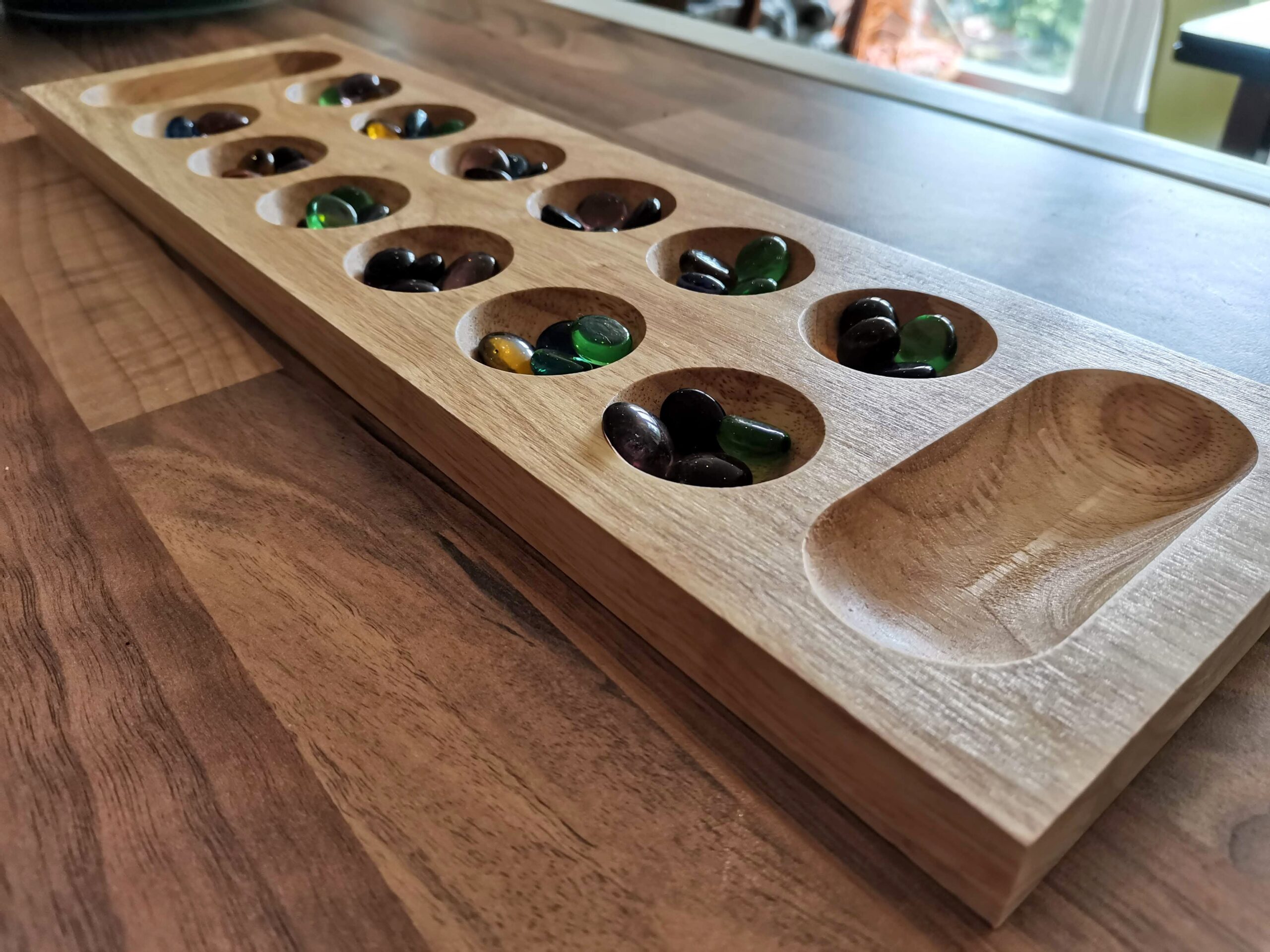The Druids Of Edora Review – Fun forest frolics from Feld
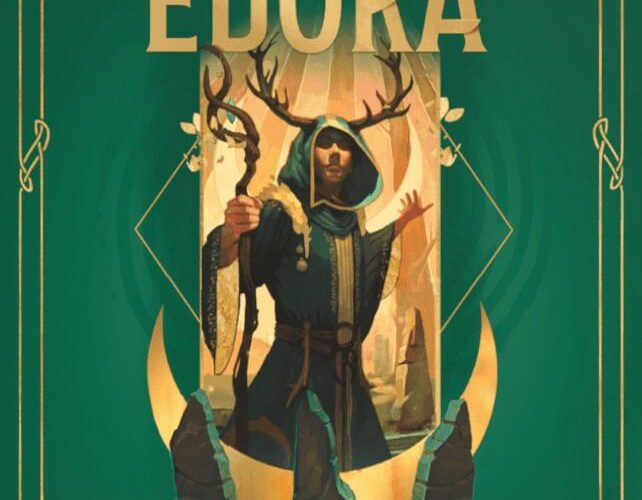
A review copy of The Druids of Edora was kindly provided by Ravensburger. Thoughts & opinions are my own.
A new Stefan Feld game arriving is always exciting to me. You never quite know what you’re going to get. From the ceremonial cardplay of Kokopelli, via the brilliance of The Castles of Burgundy, to last year’s brain-melting superb sandbox, Civolution (read my review of Civolution right here) – there’s usually something for everyone. I wasn’t sure what to expect from The Druids of Edora, because it doesn’t really look or feel like one of his games, despite the fact that there are smatterings of his touch all over the place. It’s a great game with a ton of ways to score points, so let’s take a look at what’s going on.
The setting for the Druids of Edora is clearly from the same part of Stefan’s mind that Bonfire (you can read my Bonfire review here) came from. You play the part of druids, scampering around forest clearings, collecting herbs, building standing stones, conducting rituals at shrines, and striving to be the most gosh-darned druidy druid that ever druided.
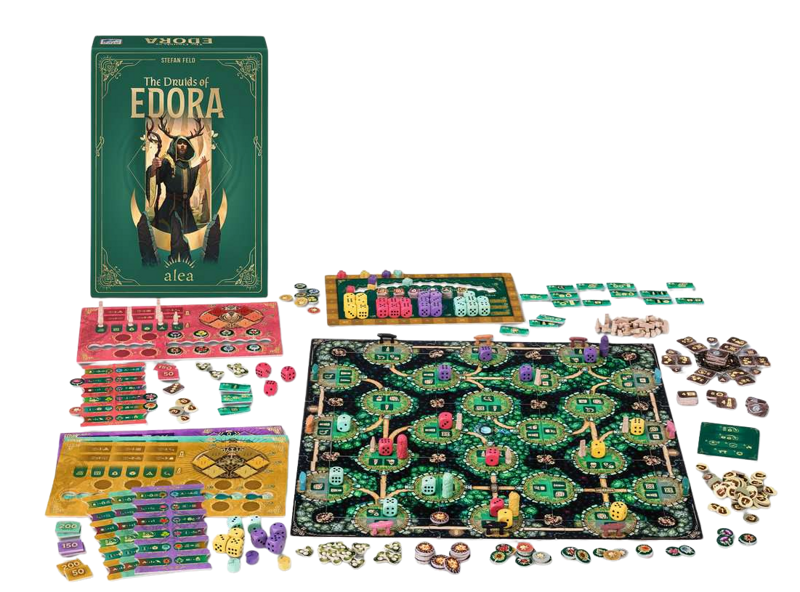
The board is modular, which leads to a random setup each time you play it, and the layout is really important. Moving around costs provisions, and if you run out of provisions, you have to take a dead turn to get some more. In a game of only 13 turns each, wasting one just to be able to move again is a big deal. Once you get to a new shrine, having followed the woodland paths between tiles, you can use one of the actions there by placing one of your available dice on the spot, paying yet more provisions for the privilege.
I know, I know. A Stefan Feld game which uses dice placement for actions, who’d have thought it?
Considerations
Druids of Edora is a real point salad in the truest sense of the description. Nearly every action you take earns you points or increases the effectiveness of something else that generates points. I won’t explain every last thing here, but to get an idea of what I mean, here are some examples. The sickle action lets you move your sickle marker along its track on your player board. Every second place along the track unlocks two herbs, which you place on your little herby bonus board thing. Herbs give bonuses like boosted actions or break the rules for you in some way. The kicker, though, is that you only get to choose one of your two newly liberated herbs to use. The other goes facedown, ineffective. Impotent. Limp.
You can place standing stones, which give you the bonus action from the stone you choose, plus every other previously unlocked standing stone action, too. You might choose to collect some mistletoe instead and use it to brew powerful, one-time spells which can really swing things in your favour. Or maybe you progress along the knowledge track with the ultimate aim of applying some truly beefy multipliers to your built structures at the end of the game.
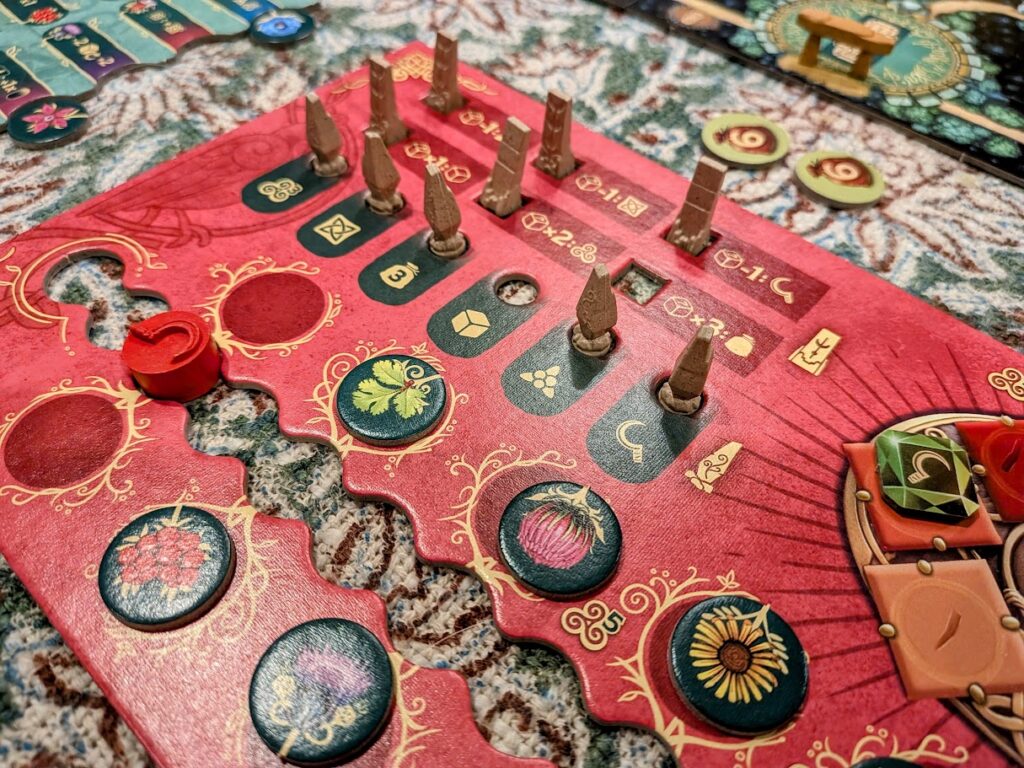
On top of all of that, and a lot more besides, you’re in direct competition with the other players at the same time. Once all of the action spots at a shrine are taken, the player whose die has the highest value gets bonus points. So you make sure you place out high-value dice when you can, right? Yeah, in theory, but every pip on the die you use to take an action costs a provision. There’s only one action where the value of the placed die has any impact on the power of the action, so for most of the game it’s a case of deciding whether to spend your precious provisions to secure future points, or take the cheap option and get the same action’s benefits anyway.
Writing this review is like standing in front of a Chinese buffet. There’s so much on offer that it’s difficult to know where to look first. If I explained every action, every possible knock-on from each synergistic consideration, you’d be bored stupid. After just a single play, you realise how important it is to set your stall out early and have a good idea how you’re going to play.
Pathfinding
The biggest diversion from previous Feld games that I’ve played is the importance of route-planning. If you’ve ever played the venerable Tsuro, it’ll strike you just how much the game board looks like a finished game of Tsuro. The movement principles are similar, too. The twisting, overlapping, interleaved paths between forest clearings are how you move your piece around the board, to reach shrines in order to take actions.
It makes Driuds feel really quite fresh compared to Stefan’s other games, and I’m really glad to see him taking concepts we all know and adding tweaks to them. We’ve had point-to-point movement recently, in Civolution, but it wasn’t as deeply embedded. It’s not just about taking actions either. There’s the competition for points at a shrine that I mentioned before, but there are campfires between all the shrines, too. If you’re the person whose die completely surrounds a campfire, you cover it with a token and take all the bonuses printed on it. It’s another example of Druids throwing stuff at you, and you trying to get the game to throw the things you want.
There’s even an element of network building. Not quite Hansa Teutonica style, but not that far removed. The board is surrounded by stonehenge-like standing stones. If you connect two of the same colour with a contiguous line of your dice, you can claim them, bagging bonus points not just for the little structures, but also for every dice the route took.
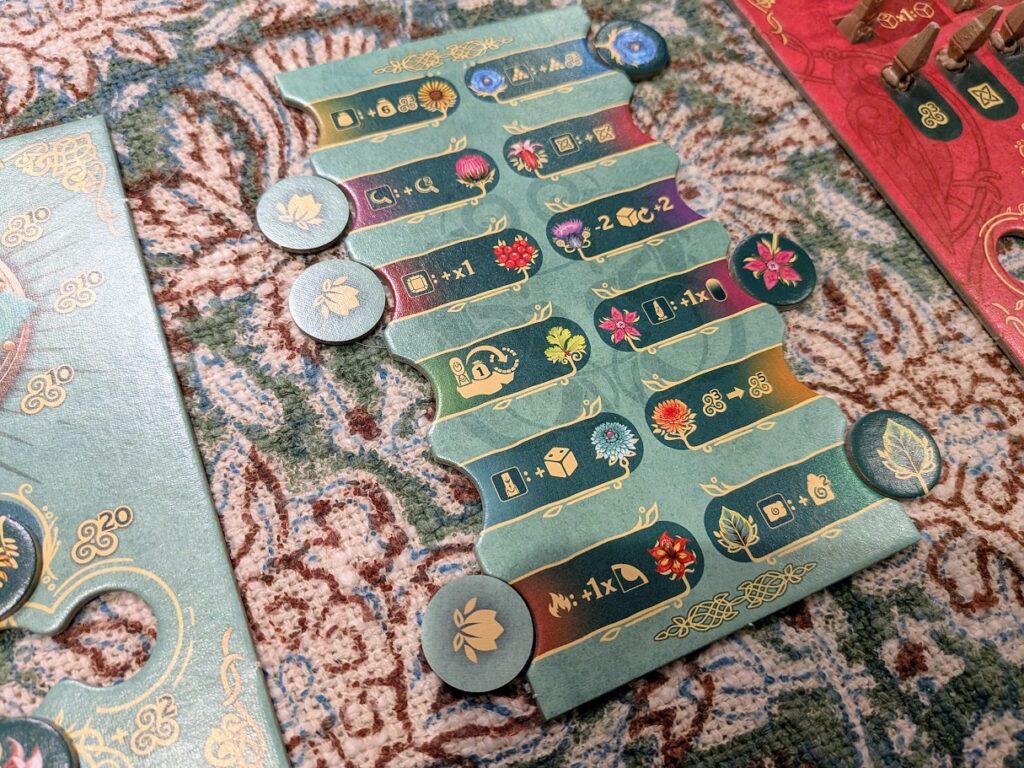
Stefan also dangles a carrot ahead of you with stone tablets. You collect tablets during the game, which contribute to your end-game scoring. For example, you might have a tablet which rewards you for building four standing stones or for brewing a certain number of potions throughout the game. There are only a certain number of each action space, which means if you decide you want to go heavy on standing stones for the bonuses, you need to make sure you’re getting to and placing dice on those action spaces.
So unlike Civolution, where you can be competitive with almost no movement around the map, Druids forces your hand. If you don’t like competing and racing for action spaces, you might not enjoy Druids.
Polyglot or polynot?
Alea, Alea, Alea. Why do you frustrate me so? I love your rectangular boxes, they take me back to my beginnings in the hobby. I love that in the Druids rulebook you’ve got the small references to actions in the margins, just like in older rulebooks. But then there’s the rest.
As much as I enjoy The Druids of Edora, and I really do enjoy it, there are some big problems with its production. Chief among them is the rulebook, and when I talk about the rulebook here, I’m talking about one of the six different language rulebooks that comes in the box and the multilingual appendix book. Specifically, the English translation.
There are some real problems with the rulebook, and it’d be remiss of me to gloss over them, or say they don’t matter, because if you go with just the rulebook, you won’t play the game properly, and that’s a major issue for me. Take the Potions action, for example. When you brew potions, the game gives you a number of mistletoe tokens. You can spend your mistletoe on spells. The rulebook doesn’t tell you when or how to use those spells, but it does tell you to look at the appendix. The appendix says:
Depending on the action field, you can brew one or two magic potions on after the other (always immediately – mistletoe can’t be saved for later!).
The Druids of Edora appendix
So I don’t know when I can use the potions, but I definitely know that I can’t save any unused mistletoe. The rules explicitly tell me so. Except, they’re wrong. Mistletoe can be saved and used later on more expensive spells, and all spells have to be used immediately.
The game also references ‘Clearings’ as a concept. Some scoring conditions are even dependent on it. ‘So what’s a clearing?’, you might ask. A clearing is a group of shrines that are connected by lit paths of trees. This is mentioned precisely once in the rules, in the middle of a paragraph explaining the power of a herb that you might choose to unlock. You could argue that it is technically in the rulebook, but there’s no way it should be hidden like that.
Enjoying this article? Consider supporting me.
The amulet tokens that you can take and adorn your board to give you bonuses have rules that reference the ‘graphic character’. It’s really unclear and confusing what it’s talking about when it says ‘graphic character’, but it turns out it’s a faint, stylised i, ii, or iii on the background of the amulet space.
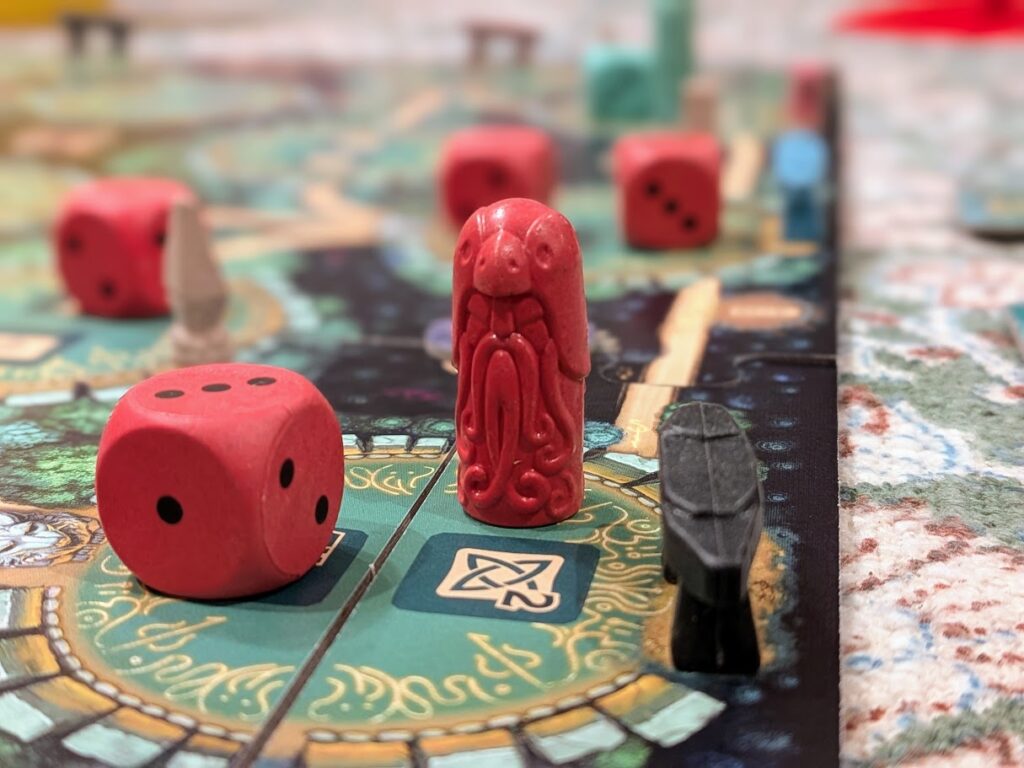
So how do I know all of these things, and a load of other niggles too? There’s a brilliant Unoffical FAQ thread over on BGG, with answers supported by Stefan Feld’s replies to rules questions. There shouldn’t be one though. This is a mid-weight, easy-to-learn Euro game in the year 2025. As much as my nostalgia has a soft spot for Alea, their production is really poor at times. I couldn’t even review the much-vaunted Puerto Rico 1897 because the rules were incomplete and just wrong.
Final thoughts
The Druids of Edora, then, a mixed bag, but not because of the game. The game itself is great. I really enjoy the mixture of point-to-point movement, network building, and dice as workers. The game flows really nicely, and in stark contrast to some modern Euro games, it gives you so much stuff, all of the time. Part of the game’s challenge comes from being able to ignore the distraction of the extra things coming your way in order to focus on your own plan.
The biggest problem is the production of the game. Not in terms of the components, which are perfectly good. The ReWood moulded pieces look great, the cardboard pieces are perfectly functional, and I’m all in favour of language-independent games. None of the board or player pieces has any text on at all, meaning that Alea can do exactly what they did – throw all the rulebooks in the box and save cost, just like Devir do. But when you do that, it’s incredibly important that the rules in all of the rulebooks are translated well, all match, and all make the game work as Stefan Feld intended.
If you can live with that big caveat and you’re willing to learn with the help of an FAQ, Druids of Edora is great. It feels different and fresh. The variable setup of just about everything in the game means you need to adjust to the game every time you play. You need a bit of planning to make sure you don’t run out of provisions, but if you can manage that, then the game is completely open to you. It’ll throw stuff at you constantly, tempting you from your path, and sometimes you’ll bite, and the game goes in a completely different direction. The actions and paying for dice pips feel a little like The White Castle (read my review here), but on a looser rein.
The Druids of Edora is a fun, satisfying sandbox with an interesting blend of mechanisms that I’ve not played with in Stefan Feld’s games before. It’s definitely most fun at three and four players, because it emphasises the competition for spaces, campfires and linking stones. It plays quickly, it’s an easy teach and easy learn, once you’ve wrestled with the rules, and definitely worth picking up.
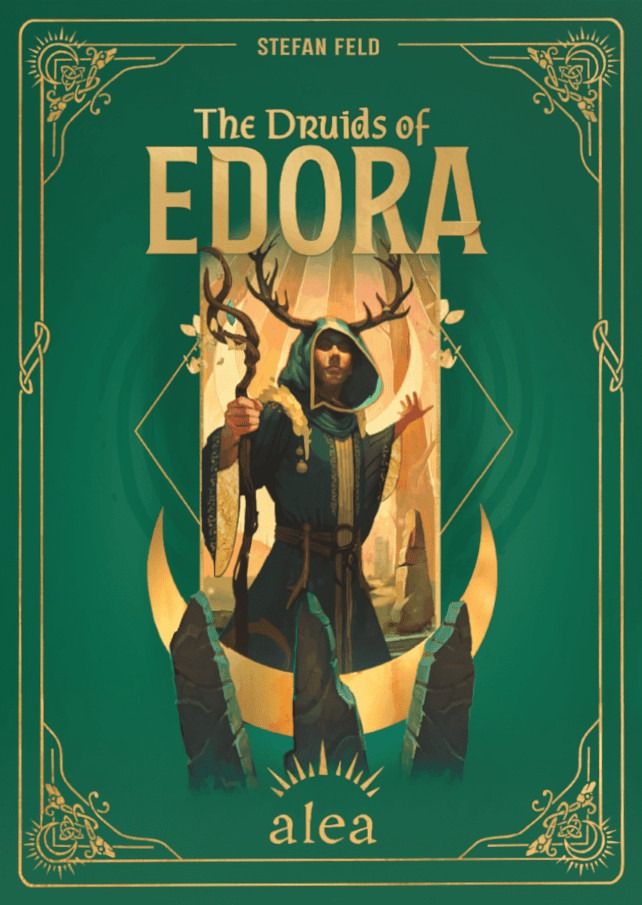
The Druids of Edora (2025)
Design: Stefan Feld
Publisher: Alea, Ravensburger
Art: Fred Gissubel
Players: 2-4
Playing time: 60-90 mins









